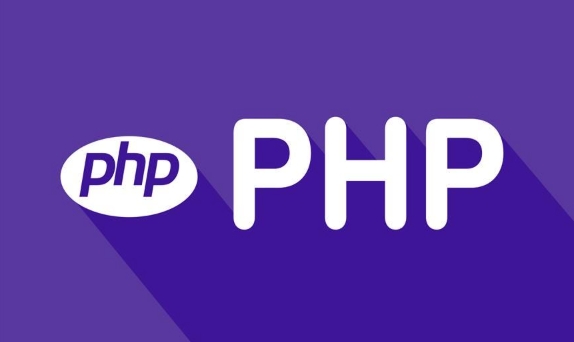 Backend Development
Backend Development
 PHP Tutorial
PHP Tutorial
 Describe the Use of `cURL` or `Guzzle` for HTTP Requests in PHP
Describe the Use of `cURL` or `Guzzle` for HTTP Requests in PHP
Describe the Use of `cURL` or `Guzzle` for HTTP Requests in PHP
Jul 11, 2025 am 02:25 AMHandling HTTP requests in PHP, cURL is suitable for projects that require underlying control and lightweight scenarios, and Guzzle is suitable for projects that pursue development efficiency and maintainability. 1. cURL is a built-in extension of PHP, suitable for scenarios where simple requests and no additional dependencies are required, but the code is cumbersome and error handling is complex; 2. Guzzle is a modern PHP library with good packaging, rich features, and supports PSR standards, which is easy to integrate into large applications or frameworks; 3. The selection basis is project complexity: use cURL for simple scripts, and choose Guzzle when complex systems or advanced functions are required.

In PHP, cURL and Guzzle are the two most commonly used methods. Simply put, if you need more underlying control, use cURL ; if you pursue development efficiency and code maintainability, choose Guzzle .

When should I use cURL?
cURL is an extension of PHP that provides a very low-level API to send HTTP requests. It is installed by default in most PHP environments, suitable for simple request scenarios or when you wish to use without introducing additional dependencies.
For example, you want to send a POST request to an API:

$ch = curl_init();
curl_setopt($ch, CURLOPT_URL, "https://api.example.com/data");
curl_setopt($ch, CURLOPT_POST, 1);
curl_setopt($ch, CURLOPT_POSTFIELDS, http_build_query([
'param1' => 'value1',
'param2' => 'value2'
]));
curl_setopt($ch, CURLOPT_RETURNTRANSFER, true);
$response = curl_exec($ch);
curl_close($ch);
echo $response; The advantage of using cURL is that it is lightweight and does not require additional installation packages, but the disadvantages are also obvious: the code is cumbersome and error handling is complicated, especially when you want to deal with redirection, authentication, upload files, etc., you have to manually configure a bunch of options yourself.
Common precautions:

- Remember to check whether the return value of
curl_exec()isfalse - Set
CURLOPT_RETURNTRANSFEROtherwise, the result will be output directly. - If you call the HTTPS interface, you may also need to set
CURLOPT_SSL_VERIFYPEER(not recommended to set to false)
Guzzle is more suitable for modern PHP development
Guzzle is a powerful and easy-to-use HTTP client library that encapsulates the underlying request logic so you can focus more on business logic than network details. It is a Composer manageable package, so you need to install it first via the command:
composer requires guzzlehttp/guzzle
Then you can use it like this:
use GuzzleHttp\Client;
$client = new Client();
$response = $client->post('https://api.example.com/data', [
'form_params' => [
'param1' => 'value1',
'param2' => 'value2'
]
]);
echo $response->getBody();It can be seen that the code is much concise and supports various advanced features, such as middleware, asynchronous requests, automatic JSON parsing, etc.
Advantages summary:
- Clear syntax and easy to read
- Supports PSR standards for easy integration into modern frameworks (such as Laravel)
- The exception mechanism is perfect, debugging is easier
- Built-in common functions (such as query parameters, form submission, JSON data, etc.)
How to choose? Depend on project requirements
If your project is simple, like just a timed script or gadget, then cURL is enough, after all, there is no need to install extras.
However, if HTTP requests are frequently initiated in large applications, or functions such as retry, logging, authentication, asynchronous concurrency are required, Guzzle is obviously more suitable.
For example:
- Make a simple weather interface call → cURL
- Connect multiple third-party services in Laravel and handle exceptions uniformly → Guzzle
In addition, some frameworks (such as Symfony or Laravel) already have built-in support for Guzzle, and it is not consistent to continue using cURL at this time.
In general, whether to use cURL or Guzzle in a PHP project depends on your specific needs. Both can complete tasks, but the applicable scenarios are different. Basically all that is it, just choose a convenient one according to the actual situation.
The above is the detailed content of Describe the Use of `cURL` or `Guzzle` for HTTP Requests in PHP. For more information, please follow other related articles on the PHP Chinese website!

Hot AI Tools

Undress AI Tool
Undress images for free

Undresser.AI Undress
AI-powered app for creating realistic nude photos

AI Clothes Remover
Online AI tool for removing clothes from photos.

Clothoff.io
AI clothes remover

Video Face Swap
Swap faces in any video effortlessly with our completely free AI face swap tool!

Hot Article

Hot Tools

Notepad++7.3.1
Easy-to-use and free code editor

SublimeText3 Chinese version
Chinese version, very easy to use

Zend Studio 13.0.1
Powerful PHP integrated development environment

Dreamweaver CS6
Visual web development tools

SublimeText3 Mac version
God-level code editing software (SublimeText3)

Hot Topics
 Why We Comment: A PHP Guide
Jul 15, 2025 am 02:48 AM
Why We Comment: A PHP Guide
Jul 15, 2025 am 02:48 AM
PHPhasthreecommentstyles://,#forsingle-lineand/.../formulti-line.Usecommentstoexplainwhycodeexists,notwhatitdoes.MarkTODO/FIXMEitemsanddisablecodetemporarilyduringdebugging.Avoidover-commentingsimplelogic.Writeconcise,grammaticallycorrectcommentsandu
 How to Install PHP on Windows
Jul 15, 2025 am 02:46 AM
How to Install PHP on Windows
Jul 15, 2025 am 02:46 AM
The key steps to install PHP on Windows include: 1. Download the appropriate PHP version and decompress it. It is recommended to use ThreadSafe version with Apache or NonThreadSafe version with Nginx; 2. Configure the php.ini file and rename php.ini-development or php.ini-production to php.ini; 3. Add the PHP path to the system environment variable Path for command line use; 4. Test whether PHP is installed successfully, execute php-v through the command line and run the built-in server to test the parsing capabilities; 5. If you use Apache, you need to configure P in httpd.conf
 PHP Syntax: The Basics
Jul 15, 2025 am 02:46 AM
PHP Syntax: The Basics
Jul 15, 2025 am 02:46 AM
The basic syntax of PHP includes four key points: 1. The PHP tag must be ended, and the use of complete tags is recommended; 2. Echo and print are commonly used for output content, among which echo supports multiple parameters and is more efficient; 3. The annotation methods include //, # and //, to improve code readability; 4. Each statement must end with a semicolon, and spaces and line breaks do not affect execution but affect readability. Mastering these basic rules can help write clear and stable PHP code.
 What is PHP and What is it Used For?
Jul 16, 2025 am 03:45 AM
What is PHP and What is it Used For?
Jul 16, 2025 am 03:45 AM
PHPisaserver-sidescriptinglanguageusedforwebdevelopment,especiallyfordynamicwebsitesandCMSplatformslikeWordPress.Itrunsontheserver,processesdata,interactswithdatabases,andsendsHTMLtobrowsers.Commonusesincludeuserauthentication,e-commerceplatforms,for
 PHP 8 Installation Guide
Jul 16, 2025 am 03:41 AM
PHP 8 Installation Guide
Jul 16, 2025 am 03:41 AM
The steps to install PHP8 on Ubuntu are: 1. Update the software package list; 2. Install PHP8 and basic components; 3. Check the version to confirm that the installation is successful; 4. Install additional modules as needed. Windows users can download and decompress the ZIP package, then modify the configuration file, enable extensions, and add the path to environment variables. macOS users recommend using Homebrew to install, and perform steps such as adding tap, installing PHP8, setting the default version and verifying the version. Although the installation methods are different under different systems, the process is clear, so you can choose the right method according to the purpose.
 Your First PHP Script: A Practical Introduction
Jul 16, 2025 am 03:42 AM
Your First PHP Script: A Practical Introduction
Jul 16, 2025 am 03:42 AM
How to start writing your first PHP script? First, set up the local development environment, install XAMPP/MAMP/LAMP, and use a text editor to understand the server's running principle. Secondly, create a file called hello.php, enter the basic code and run the test. Third, learn to use PHP and HTML to achieve dynamic content output. Finally, pay attention to common errors such as missing semicolons, citation issues, and file extension errors, and enable error reports for debugging.
 How Do You Handle File Operations (Reading/Writing) in PHP?
Jul 16, 2025 am 03:48 AM
How Do You Handle File Operations (Reading/Writing) in PHP?
Jul 16, 2025 am 03:48 AM
TohandlefileoperationsinPHP,useappropriatefunctionsandmodes.1.Toreadafile,usefile_get_contents()forsmallfilesorfgets()inaloopforline-by-lineprocessing.2.Towritetoafile,usefile_put_contents()forsimplewritesorappendingwiththeFILE_APPENDflag,orfwrite()w
 python if else example
Jul 15, 2025 am 02:55 AM
python if else example
Jul 15, 2025 am 02:55 AM
The key to writing Python's ifelse statements is to understand the logical structure and details. 1. The infrastructure is to execute a piece of code if conditions are established, otherwise the else part is executed, else is optional; 2. Multi-condition judgment is implemented with elif, and it is executed sequentially and stopped once it is met; 3. Nested if is used for further subdivision judgment, it is recommended not to exceed two layers; 4. A ternary expression can be used to replace simple ifelse in a simple scenario. Only by paying attention to indentation, conditional order and logical integrity can we write clear and stable judgment codes.





